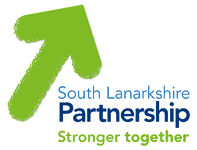Shaping Places for Wellbeing Programme
Shaping Places for Wellbeing is a 3-year programme, which ran until March 2024, and was delivered by Public Health Scotland (PHS) and the Improvement Service (IS) jointly with local authorities and NHS Boards. This was funded by the Health Foundation and Scottish Government with support from CoSLA. The programme’s aim is to improve Scotland’s wellbeing by reducing inequality in the health of its people while addressing the health of our planet.
The objective is to support those making decisions that will influence a place to consider the consequence of that decision on all the evidenced features of places that impact people’s health and wellbeing, and to support partners in reducing the negative impact of any unintended consequences being brought into the decision-making process.
Rutherglen was identified as a pilot area for the programme within South Lanarkshire and there was a focus on achieving outcomes through three activities of local project work; local learning cohort; and a national leadership cohort. Funding was received for 1.5 FTE posts of a Project Lead and Community Link Lead who provided dedicated support with a place-based, systems change approach to improve the wellbeing of people and tackling health inequalities.
Through the place-based approach, which is heavily connected to the Place Standard Tool, consideration was given to the environment; natural space; buildings; transport; the local economy; local services and access; and being digitally connected. There are thirteen Place and Wellbeing Outcomes, organised by five themes – Movement, Spaces, Resources, Civic, and Stewardship, with people placed at the centre of each of them.
A Steering Group, which included representatives across South Lanarkshire Council, NHS Lanarkshire, and the Third Sector, was also created to progress the programme in Rutherglen.
The programme took a citizen-focused approach to addressing specific health inequalities within Rutherglen. Engagement took place with a range of local stakeholders and made use of all the quantitative and qualitative data available to ensure that the work in Rutherglen Project Town was led by what matters most to those experiencing health inequalities.
Five key inequalities for Rutherglen were identified through this process which included:-
- Life expectancy variances across the town;
- Poverty, in particular child poverty;
- Alcohol-related hospitalisations;
- People on out of work benefits; and
- The proportion of people living close to derelict sites.
From December 2023, the Community Link Lead engaged with local community groups, Third Sector organisations and local people to get their thoughts on Rutherglen to ensure that the lived experience of those most impacted by health inequalities fed directly into work on the systems change required to tackle these inequalities. Following this work, the Rutherglen Project Town ‘What We’re Hearing in Our Communities’ Qualitative Report outlining the processes taken and key findings was developed and can be viewed here.
A combination of quantitative and qualitative data was used to inform on current policy context with the Place and Wellbeing Outcomes used to influence policy and decision-making and these were embedded through a Place and Wellbeing Assessment process. This involved sessions being held to consider a specific plan or policy and how it impacts on delivering a place that enables wellbeing. Details of the four Rutherglen Place and Wellbeing Assessments can be found here.
More information on Place and Wellbeing Outcome Briefings can be found on the Improvement Service webpage.



